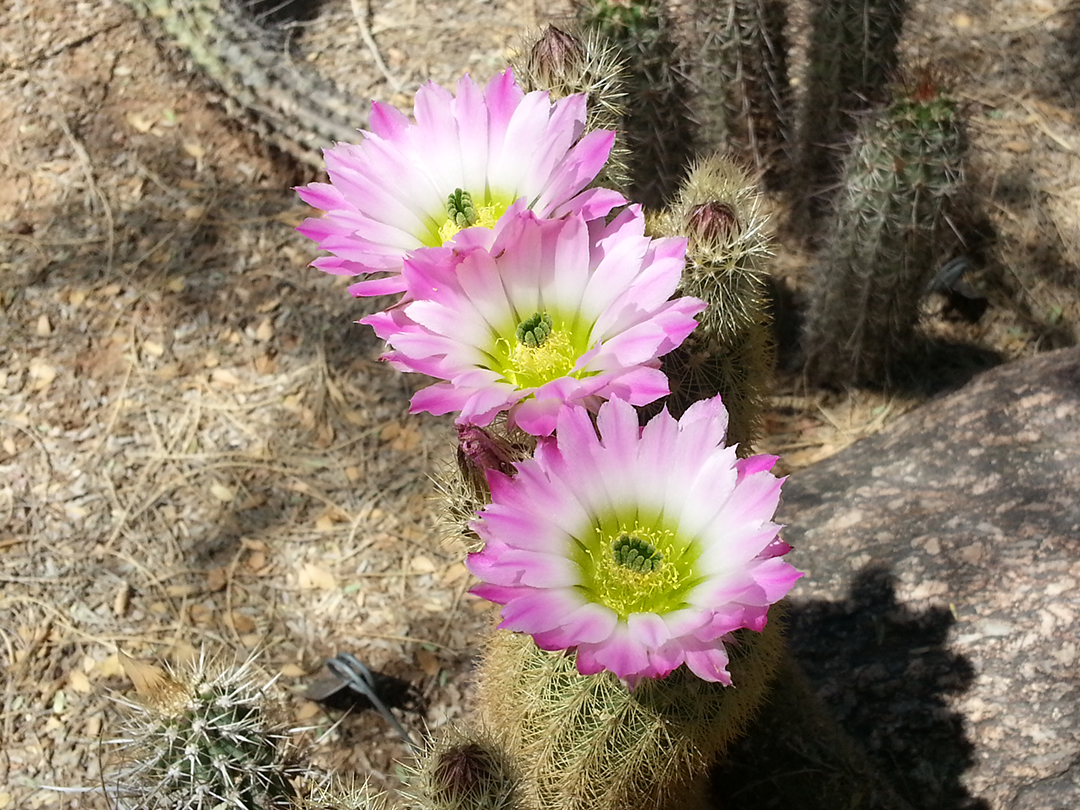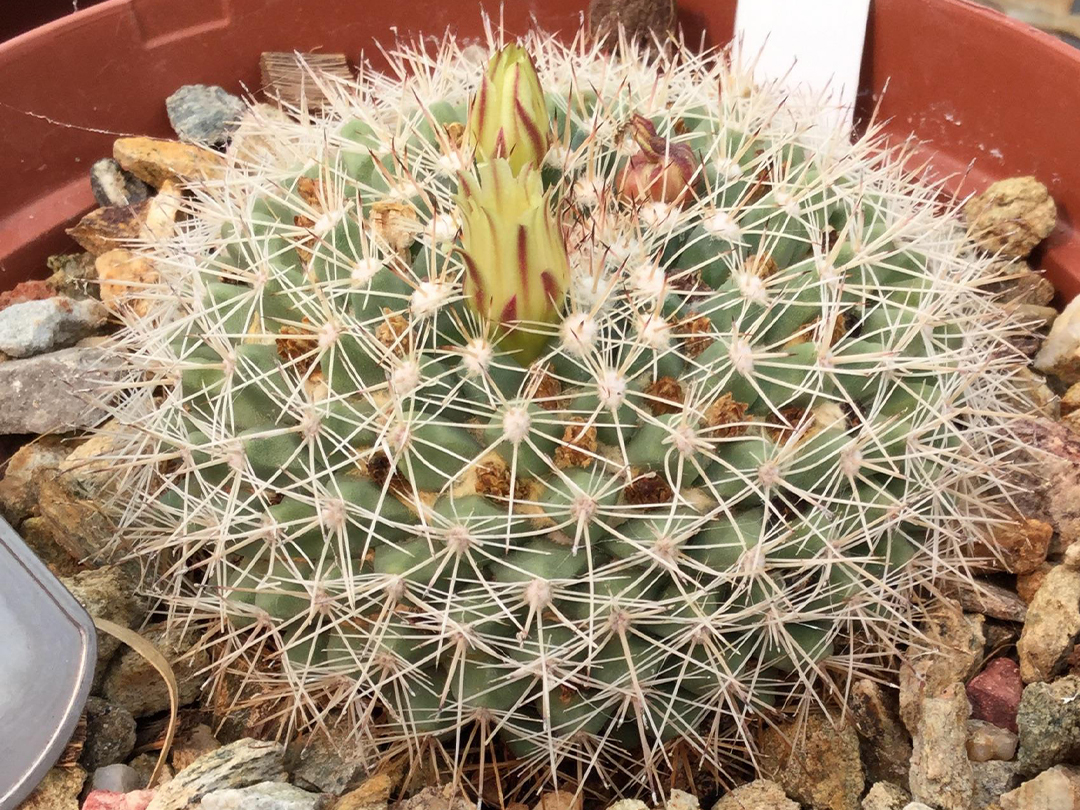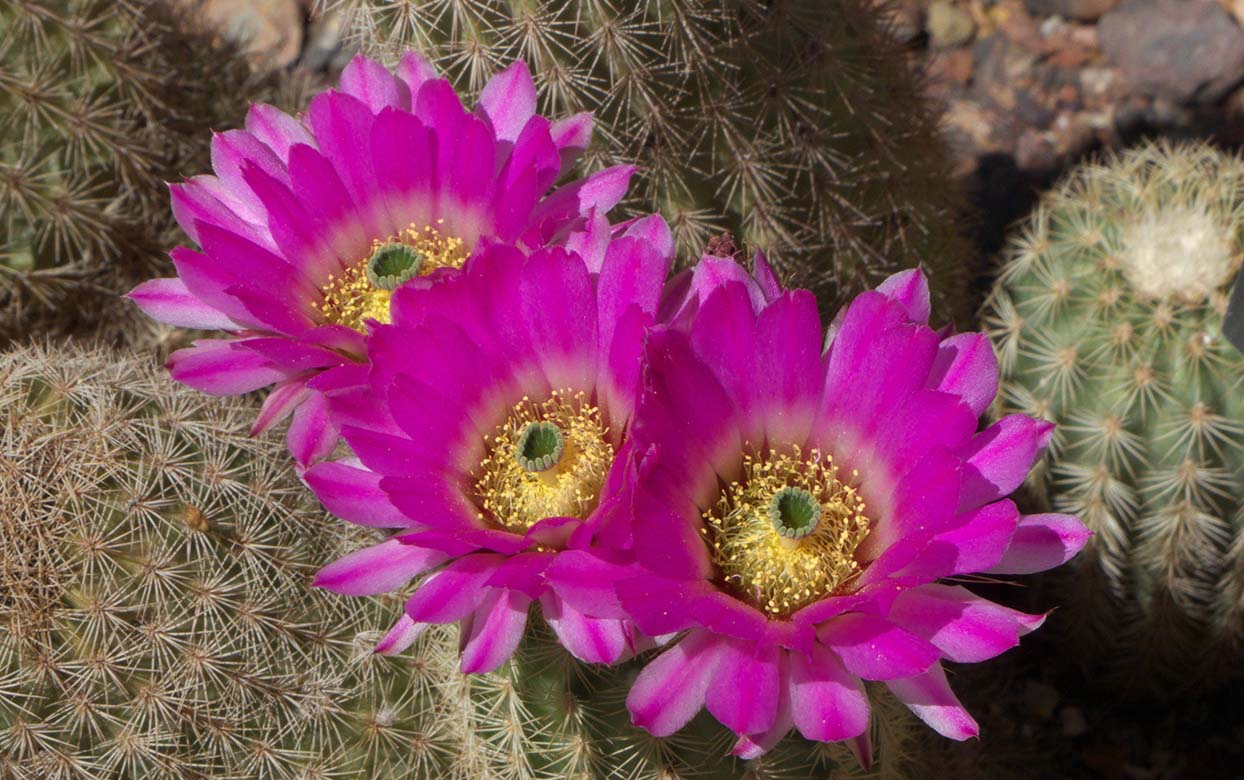For Women’s History Month, the Garden is celebrating by sharing a few cactus species and genus that are named after prominent botanists, philanthropists and writers.
The list includes the Garden’s very own founder Gertrude Divine Webster whose passion and support for desert plants and conservation helped pave the way for the Garden’s inception in late 30s.
The conservation and research work the Garden does today wouldn’t be possible without the help and support of these women and many other who have helped shape our understanding of the cactus family. There are nearly 2,000 known species of cactus. The Garden has more than two-thirds held in its collection.
Similar to cactus, these women were sharp. They offered insightful research, helped foster herbariums and provided their philanthropic support so that people would understand the importance of these desert dwellers. Read more about the women and the cactus below.

Echinocereus websterianus
Common name: Webster’s hedgehog cactus
Named after Desert Botanical Garden Founder Gertrude Webster.
Illinois-born Webster had a winter home in Phoenix she built in the 20s. By the early 30s, Webster met Cactus and Native Flora Society founder Gustaf Starck, seeking his advice after purchasing some rare cactus. Starck had a goal to establish a botanical garden dedicated to plants of the desert. The two quickly teamed up to raise money —some of which was donated by Webster — and awareness to create what is now known as Desert Botanical Garden. Webster oversaw the Garden’s opening in 1939 and also hired its first executive director George Lindsay. Lindsay discovered Echinocereus websterianus in the late 40s, and named it in honor of Webster.

Heliabravoa genus, as well as other species and subspecies.
Named after Mexican botanist Helia Bravo Hollis.
Born in 1901 in present day Mexico City, Bravo Hollis grew up during the Mexican Revolution. But even through the country’s political turmoil, she continued to study and grew fond of nature. That interest later influenced her to pursue a degree in biology. In 1927, she became the first Mexican certified biologist. By 1931, she received a master’s degree from the National Autonomous University of Mexico (UNAM per its Spanish acronyms). Her first book “Las Cactaceas de Mexico” published in 1937 and established her as a leading expert in the field. Throughout her career, she wrote several research articles, published two books and discovered numerous cactus species herself. One genus Heliabravoa was named in her honor by Curt Backeberg, which was later become a synonym of Polaskia. A couple of cactus species have named in Bravo Hollis’ honor, including Ariocarpus bravoanus and Opuntia bravoana.

Mammillaria brandegeei
Named after its discoverer and botanist Mary Katherine Brandegee, who extensively studied California’s flora.
Brandegee was born in 1844 to a Tennessee farmer. Her family later moved California during the gold rush era. After her husband Hugh Curran died in 1874, she moved to San Francisco and enrolled at the university of California’s medical school — the third woman to do so at the time. Following the advice of one of her instructors, Brandegee pursued botany. In 1879, she became a member of the California Academy of Sciences in San Francisco, continuing her botanical training by collecting plants throughout California and working in the Academy’s herbarium. She was later appointed curator of botany, and was the sole curator by 1891. Brandegee went on to mentor another woman, Colorado botanist and former schoolteacher Alice Eastwood, even giving up her salary so that the Academy could hire Eastwood as a co-curator. She relocated to San Diego where she and her husband Townshend Stith Brandegee, a fellow botanist, developed an extensive herbarium, botanical library and garden. When they moved to Berkley in 1906, they donated their herbarium and library to the University of California and both volunteered in the University Herbarium.
